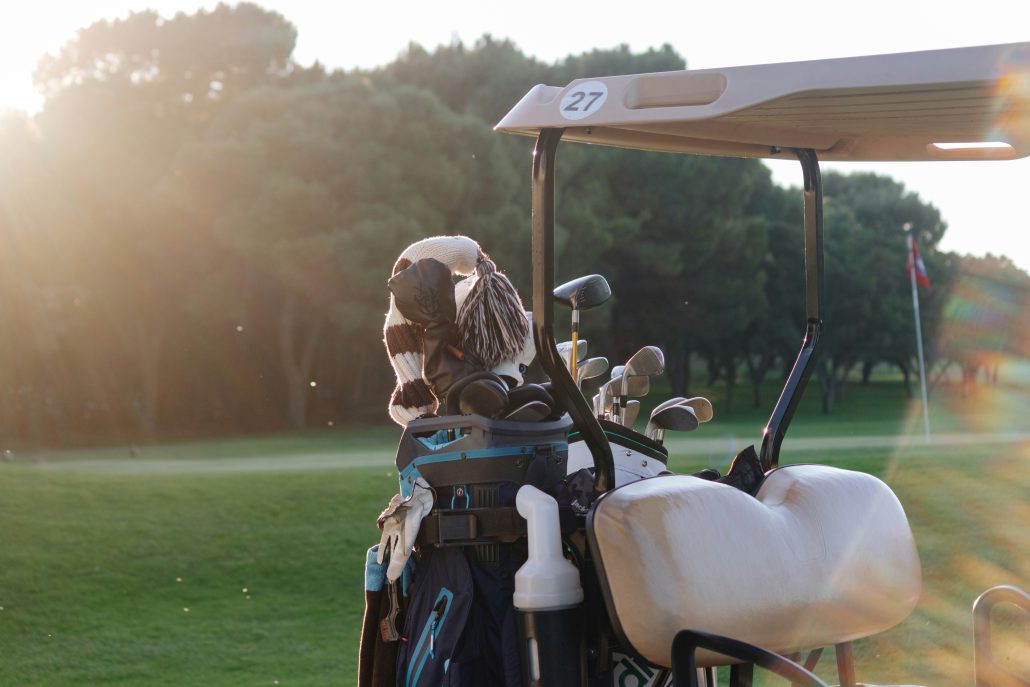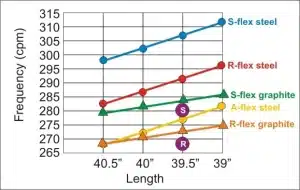Your grip is the very foundation of your golf swing and plays an essential role in determining the direction, distance, and accuracy of your shots. A well-executed grip sets the stage for a powerful and consistent swing, while a poor grip can lead to erratic shots and disappointing results. In this comprehensive guide, we will walk you through every aspect of gripping a golf club properly, offering practical tips to help you improve your game significantly.
Understanding the Importance of a Proper Golf Club Grip
Your grip serves as the connection between you and your club, directly influencing how you swing and ultimately how well you play. A proper grip allows you to maximize control and power, contributing to a more enjoyable and successful golfing experience. Understanding the importance of this fundamental technique can be the difference between a smooth round of golf and a frustrating one.
The Impact of Grip on Your Game
Gripping the club correctly affects more than just your swing mechanics. It plays a critical role in achieving the right amount of power and speed, ensuring you can hit the ball with precision. A proper grip also helps in maintaining consistency, meaning that, regardless of the club you use, you can rely on a stable foundation for each shot.
Common Mistakes in Golf Club Gripping
It’s not uncommon for golfers to develop bad habits when it comes to holding a club, and these can be challenging to break. One common mistake is holding the club too tightly, which can cause tension in your wrists and arms, ultimately reducing the fluidity of your swing. Another frequent error is the improper positioning of the hands and fingers, which can lead to loss of control and erratic ball flight.
The Basics of a Proper Golf Club Grip
Before getting into specific gripping techniques, it’s essential to understand the general basics of how to properly hold a golf club. This knowledge provides you with a foundational understanding upon which you can build more advanced techniques.
The Components of a Proper Golf Grip
A proper golf grip involves several key components, including finger placement, hand position, and grip pressure. Ensuring each aspect aligns with the standard can significantly improve your gameplay.
- Finger Placement: The fingers should primarily hold the club, allowing for better control and a natural wrist hinge.
- Hand Position: Both hands should work together cohesively, with the back of your leading hand facing the target.
- Grip Pressure: Maintain a light yet firm grip to encourage a smooth and controlled swing.
Choosing the Right Grip Style
Among the numerous grip styles available, it’s crucial to select one that complements your playing style and comfort level. The three most popular grip styles are the Vardon grip, the interlocking grip, and the ten-finger grip. Understanding these can help you choose the best option for your game.

Detailed Description of Each Grip Style
Let’s delve into each grip style to understand its mechanics and determine which might be the best fit for you.
Vardon Grip (Overlapping Grip)
The Vardon grip, named after the famous golfer Harry Vardon, is one of the most widely used grip styles among professional golfers.
- Mechanics: With the Vardon grip, your trailing hand’s pinky finger rests between your leading hand’s index and middle fingers. This overlap allows both hands to act as a single unit while maintaining flexibility.
- Benefits: This grip is well-suited for those with larger hands and is revered for offering control without sacrificing power.
- Considerations: It may take time to become comfortable with this grip due to the overlap.
Interlocking Grip
The interlocking grip is another popular choice, often favored by golfers with smaller hands or those seeking additional control.
- Mechanics: In this style, the pinky finger of your trailing hand interlocks with the index finger of your leading hand. This locks the hands together for added stability.
- Benefits: It offers superb control and unity between the hands, promoting consistent contact with the ball.
- Considerations: This grip may feel unnatural initially but can become very comfortable with practice.
Ten-Finger Grip (Baseball Grip)
The ten-finger grip is particularly favored by beginner golfers due to its simplicity and intuitive nature.
- Mechanics: Here, all ten fingers touch the club, with no overlap. It’s similar to how you would hold a baseball bat.
- Benefits: This grip provides a strong base and is very straightforward for new golfers to learn.
- Considerations: While powerful, some golfers find it offers less control and finesse compared to the other grips.
Steps to Achieve a Proper Golf Grip
With an understanding of the grip styles, it’s time to focus on how to achieve the proper grip step-by-step. Following these steps can solidify your technique and provide your swing with a firm foundation.
Step-by-Step Guide
Step 1: Position the Club
Start by holding the club out in front of you horizontally, with the clubhead square to your target. This ensures your clubface is aligned correctly from the beginning.
Step 2: Leading Hand Placement
For a right-handed golfer, place the club across the base of the fingers of your left hand. Your thumb should rest slightly to the right of the shaft’s center. Ensure the palm faces inward, allowing for a comfortable grip.
Step 3: Trailing Hand Placement
Position your right hand so that the left thumb fits in the lifeline of your right palm. Your right-hand fingers should wrap around the club while applying the desired grip style (Vardon, interlocking, or ten-finger).
Step 4: Check Your Knuckle Visibility
With the grip in place, you should be able to see two to three knuckles on your left hand. This ensures that your hands are positioned correctly.
Step 5: Adjust Grip Pressure
Apply moderate pressure—imagine holding a small bird. Too tight, and the bird (and your swing) might suffer; too loose, and you might lose control.
Maintaining Your Grip: Adjustments and Practice
Embarking on the journey of mastering your grip involves not just learning the technique but also maintaining it through regular adjustments and practice.
Regular Adjustments
Over time, factors like sweat, gloves wearing out, or even developing new habits can affect your grip. Regularly auditing your grip and making necessary changes will help maintain consistency.
Practice Drills
Integrating grip-specific drills into your practice routine reinforces muscle memory. Simple drills, like practicing your grip at home or on the driving range, can establish and maintain your technique.
The Connection Between Grip and Swing Dynamics
Having a proper grip is one piece of the puzzle that significantly influences your swing dynamics.
Grip Influence on Swing Path
A neutral grip typically produces a more desirable swing path, reducing unwanted spin and resulting in straighter shots. Conversely, an improper grip could lead to hooks or slices.
Improving Swing Speed and Power
Your grip can directly translate into increased swing speed and distance. When your hands work together harmoniously, they transfer energy more efficiently, leading to powerful impacts with the ball.

Troubleshooting Common Grip Issues
Even with the best techniques, challenges may arise. This section offers solutions to common grip-related problems.
Addressing Too Tight or Loose Grips
Tension in the grip can significantly affect your accuracy and distance. If your grip is too tight, practice relaxing your hands through breathing or visualization techniques. Conversely, if it’s too loose, focus on strengthening your hands and improving your grip pressure control.
Correcting Grip Position
Should you find your shots veering off target frequently, reassess your hand placement. Slight rotations or shifts in hand position can correct shot patterns and lead to more consistent performance.
How Grip Affects Different Clubs
It’s worth noting that the grip not only affects the overall quality of shots but also has a unique impact depending on the type of club used.
Gripping Drivers Versus Irons
For drivers, a slightly stronger grip can help keep the clubface square at impact, while for irons, a neutral to weak grip might offer better control and precision. Adjusting your grip according to the club type can be beneficial as you refine your game.
Adjusting Your Grip for Wedges and Putters
Shorter clubs often demand more finesse. With wedges, a lighter grip allows for more feel around the green. Meanwhile, putting requires an even more delicate touch, and finding the right grip pressure is critical for precision.
The Role of Gloves and Gripping Aids
Gloves and grip aids can significantly enhance your ability to hold the club correctly, especially in challenging conditions.
Benefits of Using a Golf Glove
A glove provides extra friction, reducing slippage and allowing for a lighter grip pressure, essential in maintaining consistent swings.
Gripping Aids
Additional gripping tools, like specialized grips or tape, can enhance your club interaction, offering more stability. Consulting with a professional to choose the right aid for your needs can make a considerable difference.
Seeking Professional Guidance: When and Why?
While personal practice and correction can vastly improve your grip, seeking professional guidance can offer insights you might not achieve alone.
Consulting a Golf Instructor
A seasoned instructor can provide personalized feedback and suggest adjustments you might overlook. Sometimes, an experienced eye is the catalyst for monumental improvements in your game.
Taking Lessons
Regular lessons allow for ongoing evaluation and refinement of your grip and swing. Dedicated time with a professional can exponentially speed up your improvement process.
Conclusion
Mastering the proper golf club grip can dramatically impact your overall game, providing a solid foundation for consistent and powerful swings. As you incorporate these strategies and techniques into your practice, remember that patience and persistence are key. Whether you’re a novice golfer or a seasoned player, honing your grip will set you on the path toward golfing excellence. By understanding its importance, practicing regularly, and possibly seeking professional help, you are well on your way to refining your skills and achieving your golfing goals.











